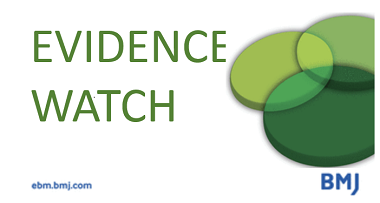The smartphone could prove to be a useful aid to diagnostics, but it is essential we take a critical approach to evidence that claims benefit for such applications.
Carl Heneghan

It isn’t long ago that a phone did just one thing but now it’s a mobile computer. It was with this in mind that a randomized clinical trial of the use of a smartphone application for the assessment of ulnar artery patency caught my eye.
Manual occlusion of the radial and ulnar artery followed by the release of the latter and subsequent assessment of palmar blush (the Allen test) can be used to evaluate the circulation to the hand and eligibility for artery access.
A randomized trial compared the Allen test with a smartphone camera lens placed on the patient’s index finger that measured the heart rate-monitoring application. The order of the tests was randomly assigned followed by the gold standard test of by Doppler ultrasonography of the radial and ulnar arteries.
The trial found that in 438 patients the smartphone had better diagnostic accuracy when compared with the modified Allen test (see the table). However, the Allen Test has no value in assessing ulnar patency. Originally described in 1929, it seems it should be part of the surgical heritage, particularly as a systematic review of its reliability, including 14 articles, concluded there is insufficient evidence to support its systematic use before arterial puncture.
The table shows the smartphone, therefore, does a little better than the Allen test but falls short of a useful test, particularly due to its low sensitivity (half the patients with radial occlusion will test negative with the smartphone application).
What this study also shows is the use an inferior comparator in a trial of a diagnostic test can be misleading. In these situations, focusing on the diagnostic accuracy result is what matters: the positive predictive value of 16.7% shows it might not be as helpful as we first considered.
| Parameter | No. (%) of participants,‡ modified Allen test n = 219 |
No. (%) of participants,‡ heart rate–monitoring application n = 219 |
pvalue§ |
| Positive test result* | 38 (17.4) | 18 (8.2) | 0.008 |
| Overall diagnostic accuracy, % (95% CI) | 81.7 (76.0 to 86.6) | 91.8 (87.3 to 95.1) | 0.002 |
| Specificity, % (95% CI) | 82.8 (77.1 to 87.6) | 93.0 (88.7 to 96.0) | 0.001 |
| Sensitivity, % (95% CI) | 25.0 (0.6 to 80.6) | 50.0 (11.8 to 88.2) | 0.6 |
| Negative predictive value, % (95% CI) | 98.3 (95.2 to 99.7) | 98.5 (95.7 to 99.7) | 1.0 |
| Positive predictive value, % (95% CI) | 2.6 (0.7v13.8) | 16.7 (3.6 to 41.4) | 0.09 |
| Positive likelihood ratio (95% CI) | 1.5 (−1.1 to 4.0) | 7.1 (0.4 to 13.8) | |
| Negative likelihood ratio (95% CI) | 0.9 (0.4 to 1.4) | 0.5 (0.1 to 1.0) |
Reference
Di Santo P et al. Photoplethysmography using a smartphone application for assessment of ulnar artery patency: a randomized clinical trial. CMAJ. 2018 Apr 3;190(13):E380-E388. doi: 10.1503/cmaj.170432.

BMJ Evidence-Based Medicine – original evidence-based research, insights and opinion
BMJ EBM accepts submissions of a wide range of article types, including original research, debate, analysis & opinion, and clinical spotlight.
Read more about BMJ EBM content in the Welcome to BMJ Evidence-Based Medicine Editorial.
Competing interests
Carl has received expenses and fees for his media work including BBC Inside Health. He holds grant funding from the NIHR, the NIHR School of Primary Care Research, The NIHR Oxford BRC and the WHO. He has also received income from the publication of a series of toolkit books. CEBM jointly runs the EvidenceLive Conference with the BMJ and the Overdiagnosis Conference with some international partners which are based on a non-profit model.